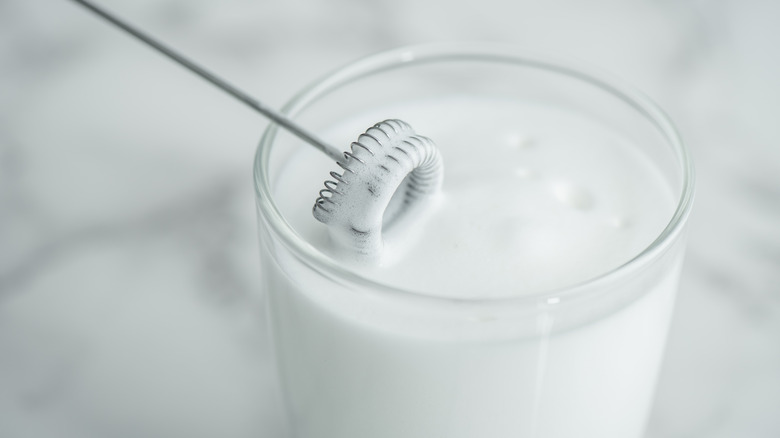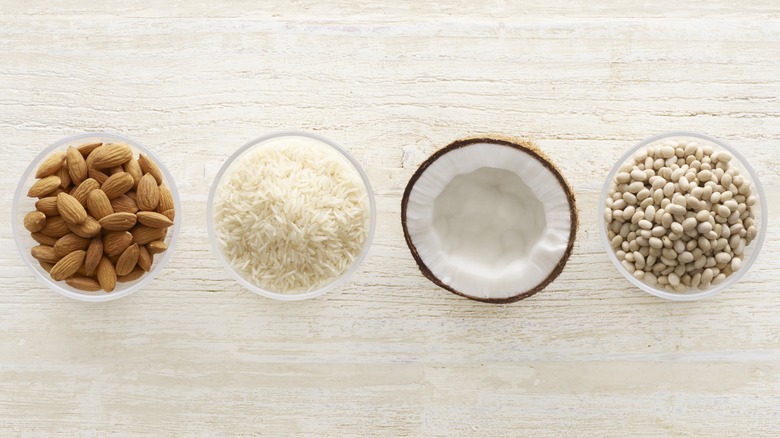The Tasty Non-Dairy Milk That Doesn't Froth Well
Picture this: You run out to the grocery store and grab rice milk to try for your next homemade latte. You get home, get a pot of coffee brewing (or the personalized Nespresso brew of your liking) and pour the rice milk into a frother, only to look down and see what looks like warm white water with a few bubbles — bummer. While rice milk is definitely one of the tastier non-dairy options, it's actually one of the worst milk frother offenders, but we have some tips on how to make it work.
A successful foam is achieved by warming milk up, causing proteins to expand and surround the air bubbles your frother creates. Combined with the thickness of the milk fat, you are left with a nice foam to pour over your coffee. Rice milk, however, is critically lacking both protein and fat, which are crucial to stable foam. This is because rice milk is simply milled rice and water (and maybe a thickener) combined to yield a naturally sweet and nutty result thanks to carbohydrates turning into sugar. It's great for flavor but not so much for your at-home latte.
On its own, rice milk might not give you that satisfying voluminous foam, but that doesn't mean it's impossible to achieve; you'll just need to call on a few of the old reliables in the plant-based milk world (and if you need some extra help navigating said world, we've broken down 19 different types of plant-based milk for you to explore).
Combine rice milk with another non-dairy alternative for better frothing
You can certainly add rice milk to your coffee, but on its own it's pretty much a lost cause in terms of frothing. Oat milk and soy milk are the classic (and typically most preferred) non-dairy alternatives that are the most suitable for frothing, given their protein content. With a combination of one of these and rice milk, you'll be one step closer to a stabler rice milk foam.
Next time you want to try frothing rice milk, mix together a combination of rice milk and oat or soy milk (preferably the barista kind if you can find it) before frothing. The additional protein content from the additions will give more volume to the foam and help stabilize it so you don't end up with those unsatisfactory watery bubbles. Pay attention to how you froth as well — there are plenty of barista tips for using a milk frother, but ultimately, try not to overheat your milk too much, as it can start to break down the proteins.
This little hack will help, but don't hold your breath; rice milk needs a lot of extra attention to get close to what you want. While it may not yield a picturesque latte at home, rice milk still deserves a spot in your fridge as a tasty non-dairy alternative, even if you need to call for backup when putting it in a milk frother.

